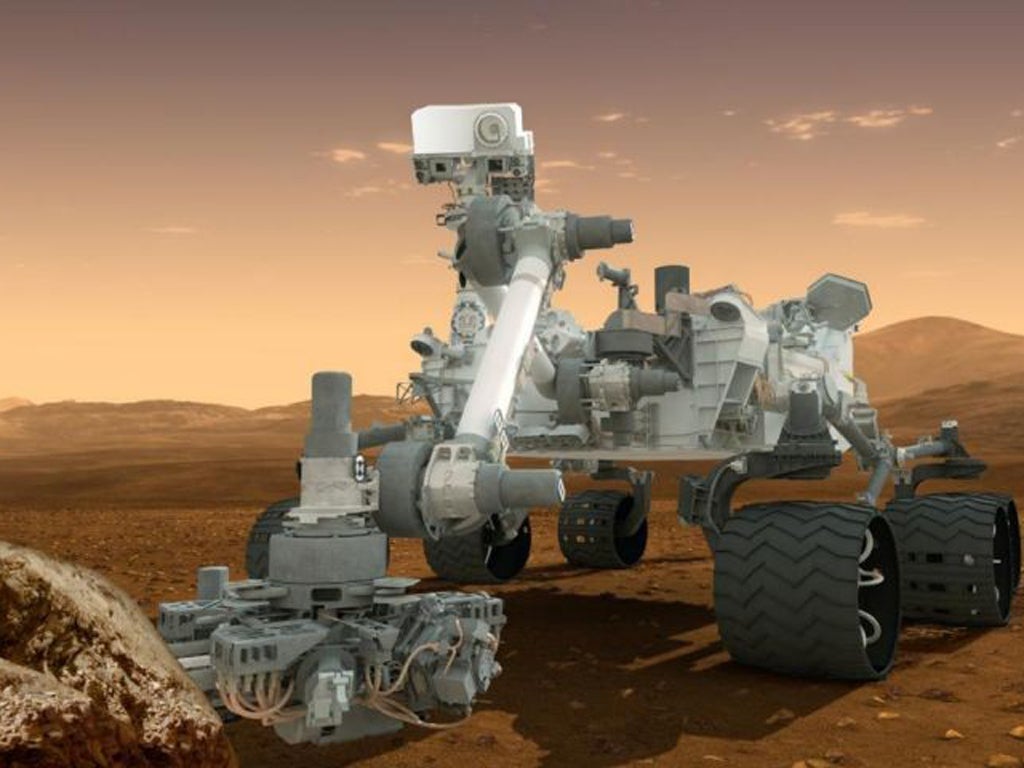Nasa aims to launch 'Mars Curiosity rover 2' in 2020

Your support helps us to tell the story
From reproductive rights to climate change to Big Tech, The Independent is on the ground when the story is developing. Whether it's investigating the financials of Elon Musk's pro-Trump PAC or producing our latest documentary, 'The A Word', which shines a light on the American women fighting for reproductive rights, we know how important it is to parse out the facts from the messaging.
At such a critical moment in US history, we need reporters on the ground. Your donation allows us to keep sending journalists to speak to both sides of the story.
The Independent is trusted by Americans across the entire political spectrum. And unlike many other quality news outlets, we choose not to lock Americans out of our reporting and analysis with paywalls. We believe quality journalism should be available to everyone, paid for by those who can afford it.
Your support makes all the difference.Nasa plans to follow up its Mars rover Curiosity mission with a duplicate rover that could collect and store samples for return to Earth, the agency's lead scientist has said.
The new rover will use spare parts and engineering models developed for Curiosity, which is four months into a planned $2.5 billion mission on Mars to look for habitats that could have supported microbial life.
Replicating the rover's chassis, sky-crane landing system and other gear will enable Nasa to cut the cost of the new mission to about $1.5 billion including launch costs, John Grunsfeld, the US space agency's associate administrator for science, said at the American Geophysical Union conference in San Francisco.
Budget shortfalls forced Nasa to pull out of a series of joint missions with Europe, designed to return rock and soil samples from Mars in the 2020s. Europe instead will partner with Russia for the launch vehicle and other equipment that was to have been provided by Nasa.
Grunsfeld said Nasa will provide a key organics experiment for Europe's ExoMars rover, as well as engineering and mission support under the agency's proposed budget for the year beginning 1 October 2013. T he United States also will provide the radio communications equipment for a planned European orbiter slated to launch in 2016.
Details about what science instruments would be included on the new rover, whether or not it would have a cache for samples, and the landing site have not yet been determined.
Nasa plans to set up a team of scientists to refine plans for the rover and issue a solicitation next summer.
The National Academy of Sciences last year ranked a Mars sample return mission as its top priority in planetary science for the next decade.
"The (science) community already has come forward with a very clear message about what the content of the next Mars surface mission should be, and that is to cache the samples that will come back to Earth," said Steve Squyres with Cornell University.
"That's really a necessary part of having this mission," he said.
Nasa had considered flying an orbiter in 2018, but decided instead to provide equipment for the European probes, extend its ongoing Mars missions and develop the Curiosity twin rover for launch in 2020.
"We could have come up with something in 2018, but with the budget that we're in we would not have had such a full program. It would have been a down-scaled orbiter of some kind," Grunsfeld said.
Under the revamped Mars plan, Curiosity's two-year mission would be extended to five years.
The new rover also would help Nasa prepare for eventual human missions to Mars, a long-term objective of the US space program.
"If we think of the 2030s as the potential for human exploration, I think this 2020 rover and the other things we might be able to do in the 2020s as a synergistic collaboration between science and human spaceflight. There are a lot of cool things we can do," Grunsfeld said.
Reuters
Join our commenting forum
Join thought-provoking conversations, follow other Independent readers and see their replies
Comments